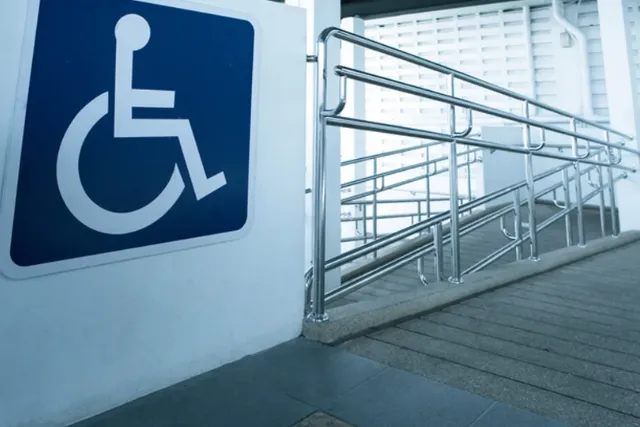
Starting this fall, buildings that receive federal funding through the U.S. Department of Energy will no longer have to meet certain accessibility standards, following a controversial decision to rescind a decades-old rule under the Rehabilitation Act of 1973.
The DOE announced the move through a direct final rule in May, describing the requirement as redundant and “unduly burdensome” because other federal non-discrimination provisions already apply.

“Given the general prohibition on discriminatory activities and related penalties … DOE finds these additional provisions unnecessary and unduly burdensome,” the agency wrote in the preamble to the rule rescission. “One-size-fits-all rules are rarely the best option. Accordingly, DOE finds good reason to eliminate this regulatory provision.”
The rule, known as Section 504, has been on the books since the 1970s. It requires that any building—new or existing—renovated or built with DOE funds be accessible to people with disabilities. The requirement has shaped countless retrofits over the decades, adding ramps, wider doorways, accessible bathrooms, railings and other features.
The DOE originally intended the rollback to take effect July 15, but after receiving more than 20,000 comments, many opposing the change, it delayed implementation to September 12.
Disability-rights groups say the agency is misusing the direct final rule process, which is intended for non-controversial technical corrections, not significant civil rights rollbacks.

“The Department of Energy’s decision … is a direct attack on disability rights and part of a broader pattern of civil rights rollbacks aligned with Trump-era policies,” said Robyn Powell, assistant professor at Stetson University College of Law, in comments to Mother Jones.
Claudia Center, legal director at the Disability Rights Education & Defense Fund (DREDF), added that she had never seen the process used this way: “I’ve never seen [the process] before in my career, and most of my colleagues report the same,” she told Disability Scoop.
DREDF is urging supporters to demand the DOE reverse course, saying the move ignores Congress and the courts.
“Congress passed the Rehabilitation Act. Congress said it agreed with the 504 rules. Congress added the 504 rules to the Rehabilitation Act. The Supreme Court has looked at the rules and said they belong in the Rehabilitation Act. U.S. courts have spent years making sure people follow the rules,” DREDF’s suggested letter to the DOE reads.
Advocates worry this could signal more cuts to accessibility protections. “This action could be a ‘trial balloon’ for other agencies,” Center warned. “There are more than 80 sets of Section 504 regulations across the federal government. This could be the first of many.”
Should the change go through, organizations that use DOE grants—often for energy efficiency upgrades—will no longer be required to ensure their buildings are accessible if they weren’t already. This could affect features such as entrance ramps, accessible restrooms, signage, railings, and other modifications that help people with disabilities navigate public and private spaces.
While the DOE says general federal non-discrimination rules still apply, civil rights attorneys note that dropping the clear Section 504 requirement creates uncertainty.
Amy Robertson, a civil rights attorney, told Disability Scoop that owners who skip accessibility upgrades may still face legal exposure. They “would still be open to liability under general non-discrimination requirements,” she said.
For now, disability-rights advocates are bracing for a broader fight to preserve accessibility protections not just at the DOE but across multiple federal agencies if similar rollbacks are attempted.
Originally reported by Robert Freedman in Construction Dive.